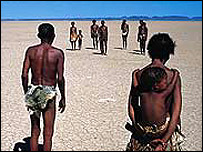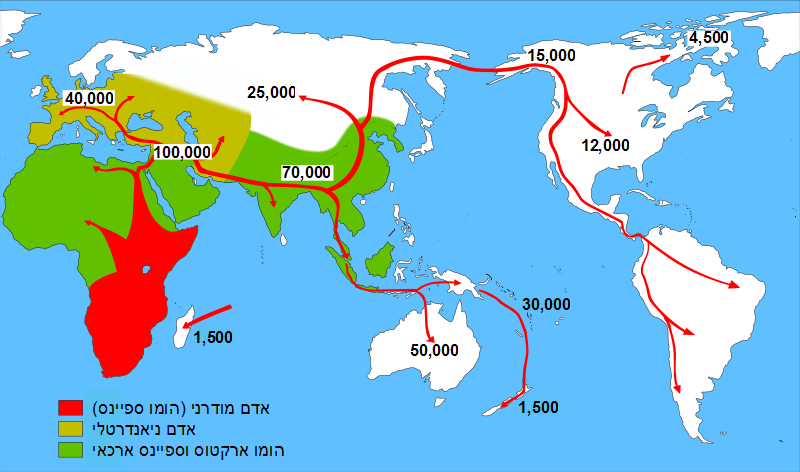The reason archeological evidence did not survive was the rise in sea level which destroyed cultures that lived mainly on the coasts

The modern humans who migrated from Africa probably did so by attaching themselves to the shores of Asia. Analyzes of the remains of the original aboriginal populations in Southeast Asia raise the possibility that they arrived in a single migration wave that left the Horn of Africa over 65 years ago. By tracking the coasts, say the authors of the analysis, humans could colonize the Earth with impressive speed and reach distant countries like Australia within a few thousand years.
Most researchers agree that the first humans appeared in Africa before spreading around the world. However, while the archaeological evidence shows that humans moved north towards Egypt and the Middle East, climatic records show that this area was a hostile desert until 50 years ago, and therefore it was probably not the preferred route.
An eastward journey around the coastlines of Somalia and eventually India may be one alternative, says Vincent Macaulay of the University of Glasgow in the UK. "It wasn't difficult to live on the beach," he said. In fact it was even quite attractive.
live alone
McCauley and his colleagues tested the idea by studying DNA samples from the Orang Asli people in Malaysia, who apparently did not marry members of other groups. "We're trying to find out who were the first people out of Africa, so obviously the people to sample are the most original natives." explained.
The researchers collected tissue samples from the inside of the cheek from 260 Orange Asli boys and girls and analyzed their mitochondrial DNA, the part that is passed on from them to children. They then compared it with mitochondrial DNA from other populations - the difference between the groups reflects the time since they separated.
Another research group, led by Lalji Singh from India, performed similar experiments on local groups in the Andaman Islands in the Indian Ocean.

By comparing these data with the data in the mitochondrial DNA of other populations in the area, it was concluded that the two populations are descendants of a single group of humans that probably contained 600 families of reproductive age, who lived in India 65 thousand years ago. The studies are reported in this week's issue of Science. The researchers raise the possibility that the Andamans and Orange Asli could not have moved in winding paths within the land, and that they could not have remained so close to the original eochlesia of India.
fast movement
If humans tended to migrate along coasts, that might explain how they moved so quickly, McCauley says. The first remains found in Australia are about 60 thousand years old, which means that the first pioneers moved a few kilometers a year.
By being attached to the coastline, there was very limited space for expansion, thus requiring settlers to use up their resources more quickly and be forced to move on. McCauley says. Moreover, if the sea level has risen since then, many archeological remains are probably below sea level and therefore this is the explanation why most of the archeological finds were found in the heart of the continents.
